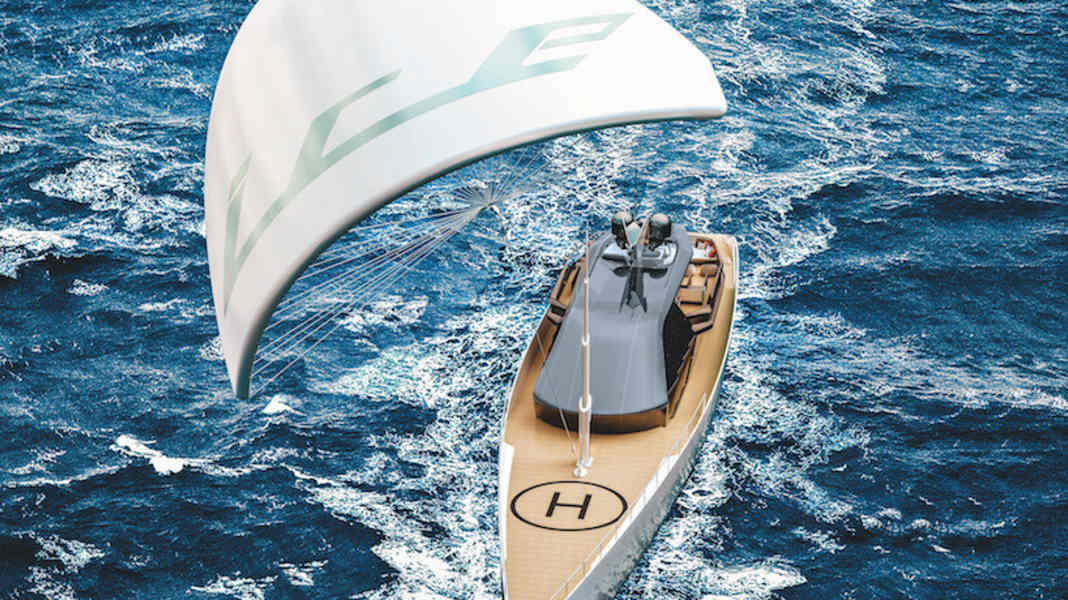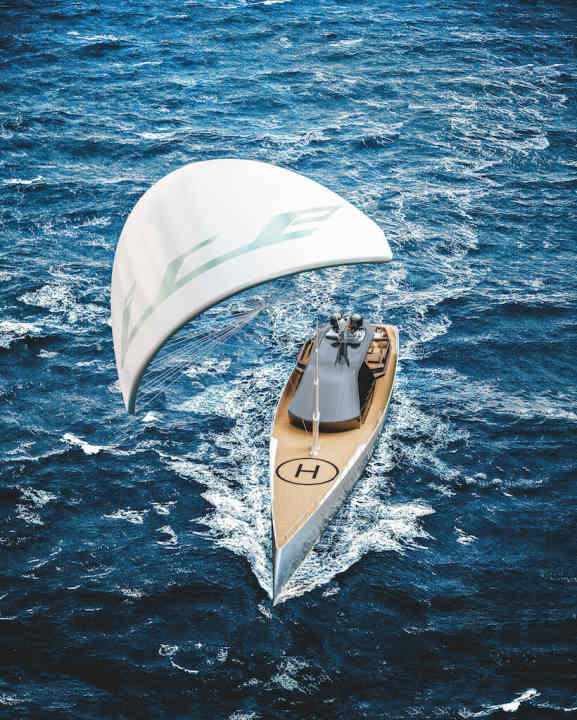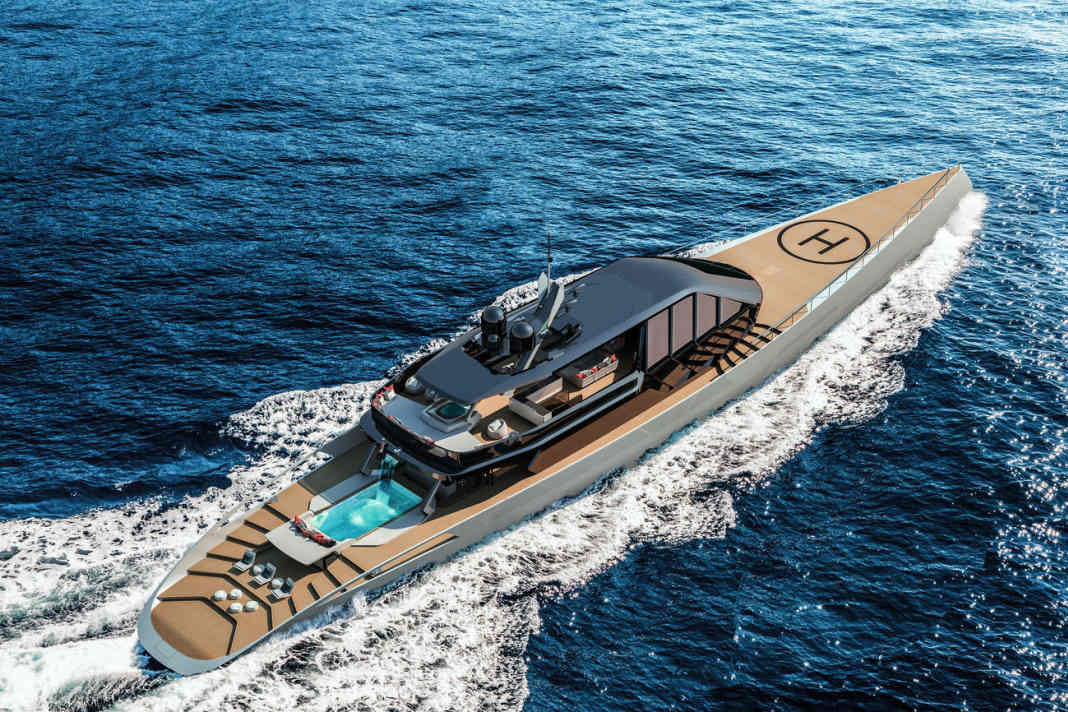

The first yacht with kite support - so far this has only consisted of grids and textures, i.e. in the form of renderings by Red Yacht Design. The Istanbul-based studio developed "ICE Kite" together with the Dutch designers from Dykstra. Commercial towing kite forays have already been undertaken by Skysails. Founded in 2001, the Hamburg-based company tested the propulsion relief system in 2008 on the 132 metre-long cargo ship "Beluga SkySails". In yachting, the North German designer Stefanie Krücke pointed the way to the future in 2007 with her thesis "Kitano". Her unrealised 20-metre yacht relies entirely on outsourced propulsion energy. Now, in times of green shipping and hybrid hype, the market seems to be ready on both sides. The major Japanese shipping company K-Line recently ordered the Seawing kite system from the French Airbus subsidiary Airseas. If the handling is good and CO2 emissions and fuel consumption are actually reduced by 20 per cent, K-Line intends to purchase 50 more kites.
The savings on the "ICE Kite" should be much higher. The reason for this is the efficient aluminium hull construction, which Dykstra gave the dimensions of a sailing yacht: 64.20 metres in length with a width of 10.80 metres and a draught of 1.76 metres. A centre of gravity and the low centre of gravity of the carbon superstructure are designed to ensure tilt and course stability in kite mode, even on sharp courses. The 160 square metre kite is launched by a cable winch behind the helipad and is operated fully automatically. The wind blows stronger and more steadily in the upper wind layers. The energy yield increases if the kite is constantly flying figure eights, as is the case with flying wind turbines. The only limitation: If the kite is pulled in too late in sudden storms, there is a risk of breakage or loss of the flying device.






Speed forecasts predict a top speed of 17.4 knots - without kite support and only with a 1470 kilowatt diesel main drive. The development team led by the German client has deliberately dispensed with diesel-electric power. Another self-imposed regulation concerns the volume of space, which is just under 500 gross tonnes and reduces building regulations. "ICE Kite" will be the longest motor yacht within this volume framework. Nevertheless, ten guests will be able to sleep on the lower deck.
The high proportion of glass in the front superstructures is part of the lobby below and the kite lounge above, with an al fresco dining area behind it. The majority of the social areas are spread over 475 square metres of outdoor space. Custom RIBs, two jet skis and a flying or diving boat are stored on the 26-metre "ICE Ghost". The galley is located on the main deck, with space for four guests or crew members below. As the floating satellite can travel at speeds of up to 16 knots even in heavy seas, the hull is made of steel, while the superstructure is made of carbon fibre. How realistic is the project? According to Red Yacht Design, the owner is considering having the mother and daughter ship built by a Dutch shipyard.
